The Arnold & Son Golden Wheel presents a fresh take on a centuries-old complication without (ahem) reinventing the wheel.
And I love this quirkily different yet intuitive way of reading time. The “wandering hours” is an all-time favorite alternative way of mine of indicating the passing hours and minutes because it gives the passage of time a more metaphorical sense rather than just a numerical value.
Instead of traditional hands, the hours are displayed on a disk that passes over a semi-circle arch to indicate the minutes. With a quick glance, you can see how much of an hour has gone by without necessarily needing to know the precise minute.
Arnold & Son presented its own take on the wandering hours display at Baselworld 2015 with quite a twist. Yet, with all the other impressive releases the brand came out with at the same time, like the Constant Force Tourbillon, the Golden Wheel went relatively unnoticed (see Arnold & Son Constant Force Tourbillon: The Force Is Strong With This One).
Not new despite its looks
Another more obvious reason for the Golden Wheel not receiving the kind of recognition I feel it deserves is that this isn’t exactly a novel or unique way of displaying time.
Now I know what you’re thinking: Audemars Piguet did it with the Star Wheel and Urwerk has been doing it in some form or another in just about every watch the brand has ever made (save perhaps for the EMC).
And in watches it’s often easy to appropriate certain aesthetics and complications. But the cold hard truth is that most of what we see today is merely a reinterpretation of what’s already been done.
And in the case of the “wandering hours” display, it’s been around for centuries.
Originally invented in the seventeenth century for table clocks as a way to display time in a much more fluid and poetic manner, the wandering hours system found its way to pocket watches by English watchmakers of the seventeenth and eighteenth centuries such as Joseph Windmills and Joseph Antram, the latter being clockmaker to King George I of England.
It is in this context that Arnold & Son chose to revisit this curious mechanism, much in the same way the boutique brand did with eighteenth-century skeleton clocks in the Time Pyramid watch.
It’s not so much about the direct inspiration from John Arnold and his eponymous company’s work, but reinterpreting the creativity of classic English watchmaking in a contemporary context, something the Swiss watch industry generally overlooks.
What’s particularly interesting is that unusual and interesting as it looks, the wandering hours system isn’t actually all that complicated to realize. As a matter of fact, this antique Breguet Etablissement Mixte pocket watch dates back to 1820 and looks almost identical to the mechanism found in Arnold & Son’ Golden Wheel and Audemars Piguet’s Star Wheel – glass disks and all. (Note: Breguet’s Etablissement Mixte watches were made outside his workshop, but to his design and under his supervision.)
And yet, Arnold & Son’s Golden Wheel boasts something that no other wandering hours watch or clock to date has ever had, and to me makes it that much more interesting.
So what exactly has Arnold & Son done differently?
The big difference
The biggest difference is perhaps more on the philosophical side and absolutely subjective, but it’s something that is rarely conveyed through photography. Yet it is the very essence of a watch: motion.
Of all the watches I own, only two lack second hands or indications, though one of them is a vintage heirloom and the other has a unique vertical linear retrograde hour hand. So they’re forgiven.
Time is fleeting and I need my watch to remind me of that every time I look down at my wrist. Otherwise, it’s just too static. And that’s precisely where the majority of other watches with wandering hours have fallen short for me. The idea of revolving disks or satellites is conceptually impressive, but in the metal I find their inanimate nature rather underwhelming.
To remedy this lack of animation, Arnold & Son integrated its specialty complication, the True Beat, which is more commonly known as dead beat seconds, right in the middle of the Golden Wheel.
Several years of research and development was required to integrate the seconds into same central axis as the carriage or “carrousel.” The addition of a constantly moving element gives the wandering hours display the kind of animation I’ve always felt it needed.
The juxtaposition between the smooth, endless revolution of the disks and the constantly jumping seconds lends the watch a vivacious kind of charm.
The Golden Wheel comes in a 44 mm red gold case that tapers down towards the wrist, offering a more comfortable wear than the stated diameter would lead you to believe.
At these proportions, this is not exactly a watch that will go unnoticed by either aficionados or curious observers, but it’s somehow fitting for such an ornately unusual display.
And while the central carrousel and its sapphire disks are the focal point of the dial (or, rather, movement plate), the contrast between the anthracite-colored côtes de Genève stripes and white mother-of-pearl minute track add an array of tones, textures, and depth to the already sculptural dial side of the Golden Wheel.
If there’s one gripe I have with the dial, it’s that there isn’t enough of a distinction between the minute markings of the arch and the seconds track around the flange. Though I suspect that once you’ve worn the watch for a while quick legibility becomes a nonissue.
With the Golden Wheel, Arnold & Son has demonstrated that the La Chaux-de-Fonds brand is just getting warmed up when it comes to exploring the annals of English watchmaking. And explaining to a twenty-first-century consumer base and that you don’t have to completely reinvent the wheel (cheesy pun intended) to breathe new life into an age-old complication.
Quick Facts
Case: 18-karat red gold, 44 mm
Functions: jumping digital wandering hours, minutes, central True Beat (dead) seconds
Movement: automatic Caliber A&S6018 with 45 hours power reserve
Limitation: 125 pieces
Price: 43,300 Swiss francs (taxes not included)





















































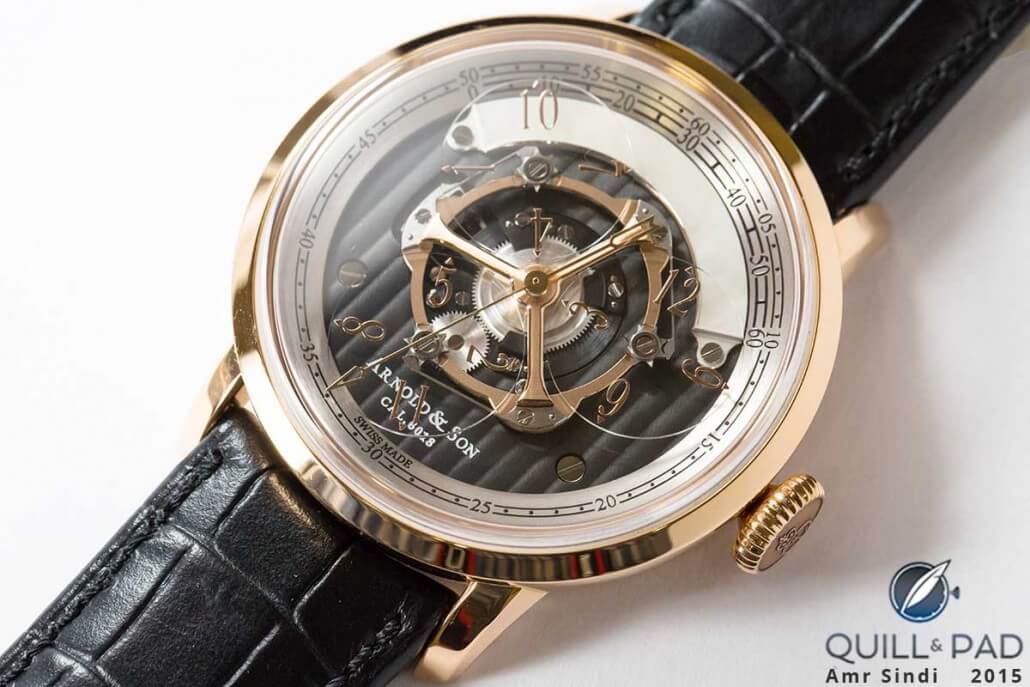
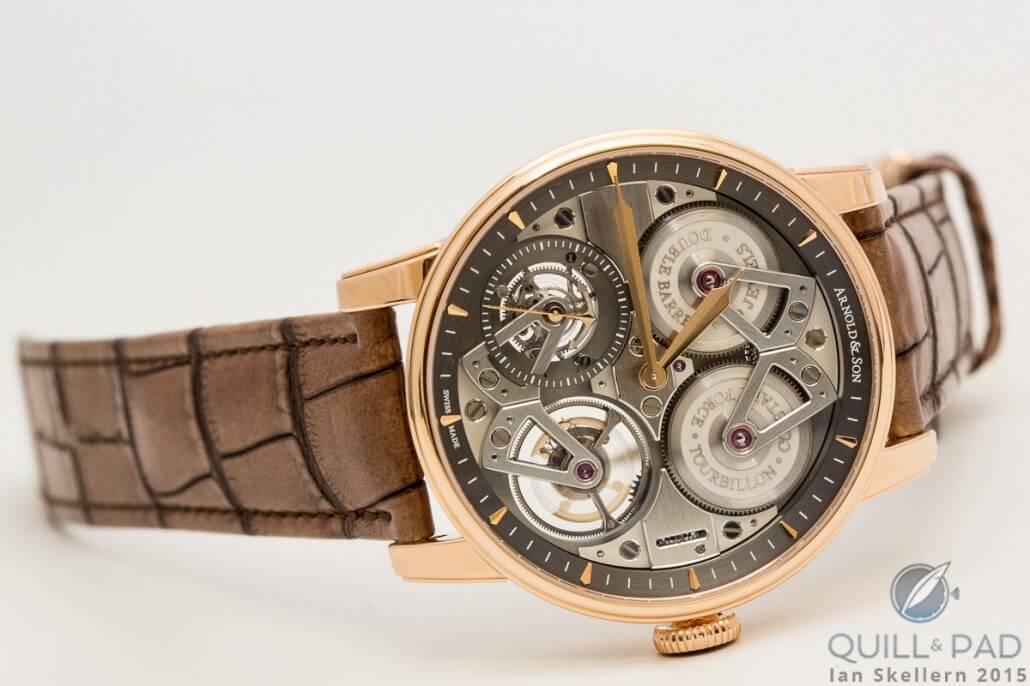
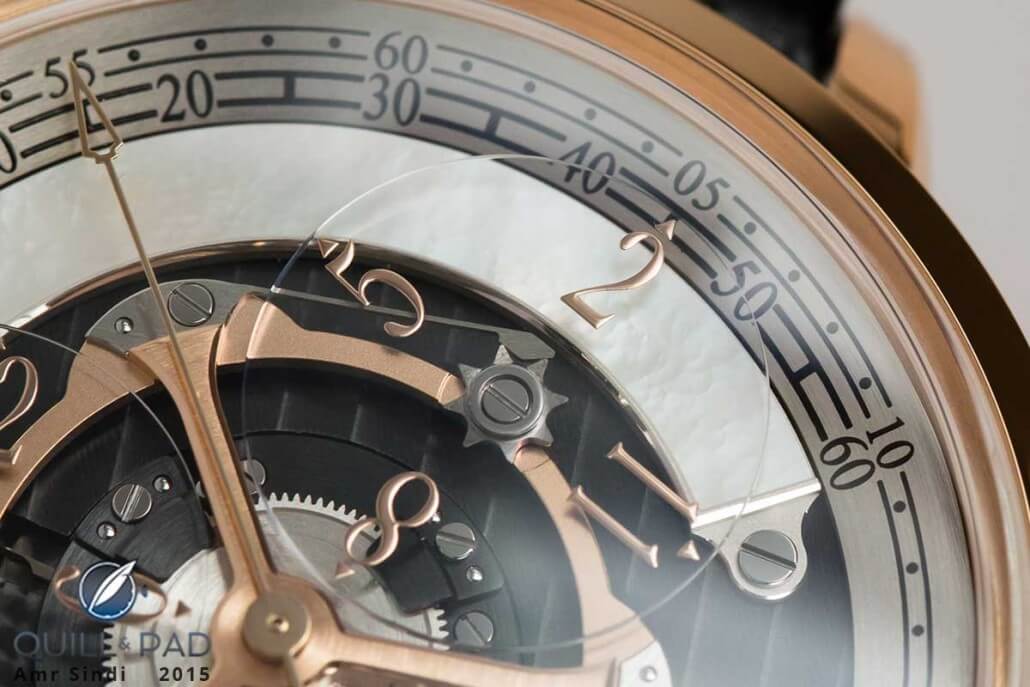
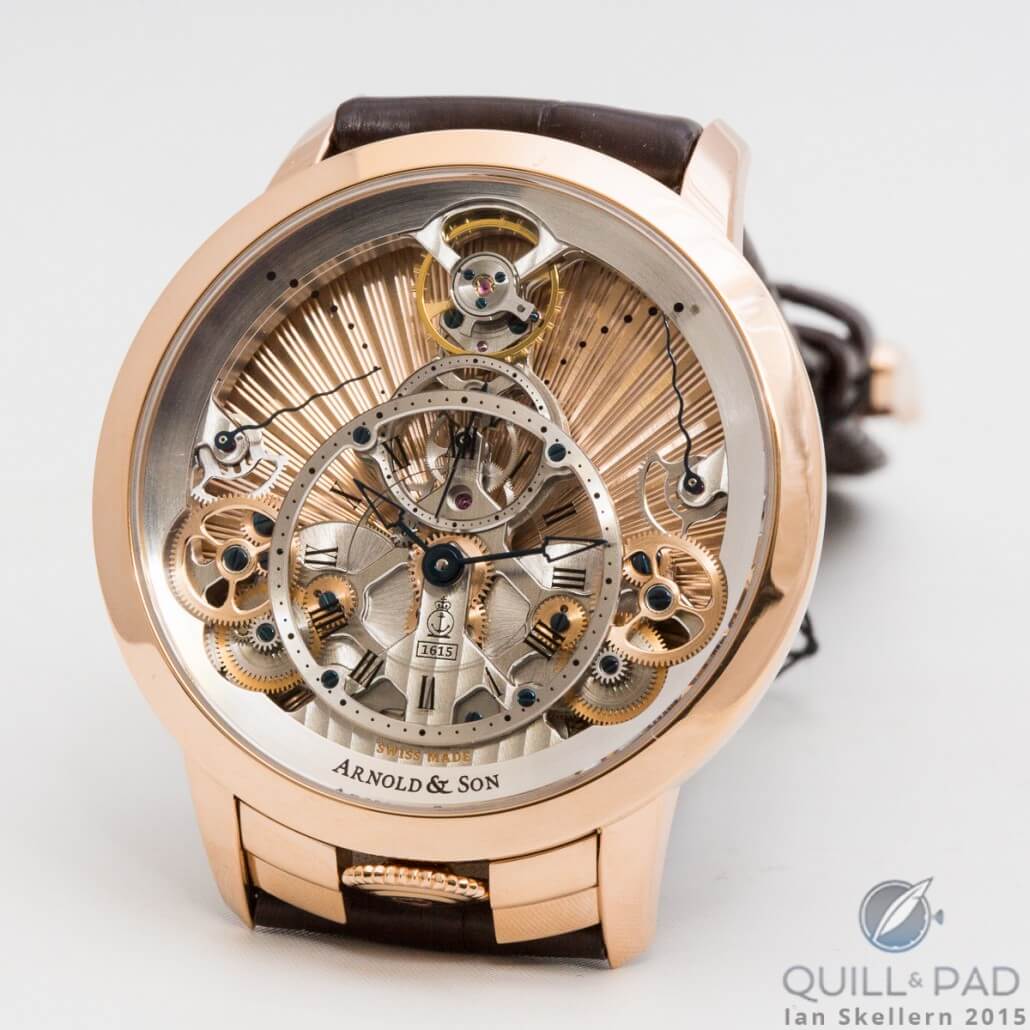
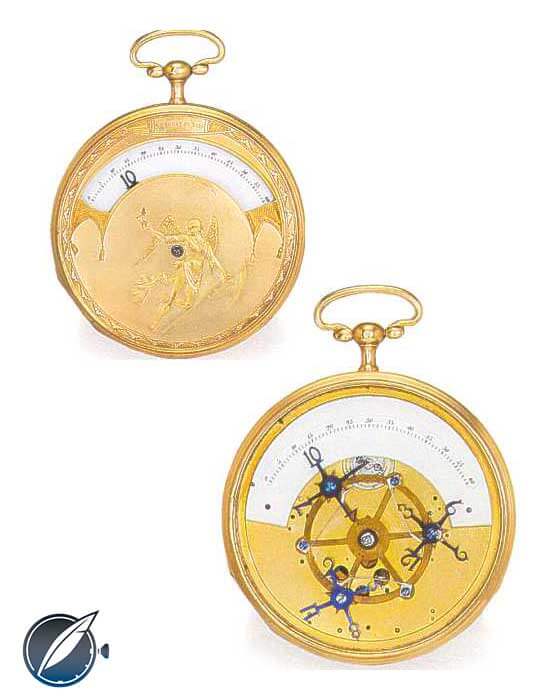
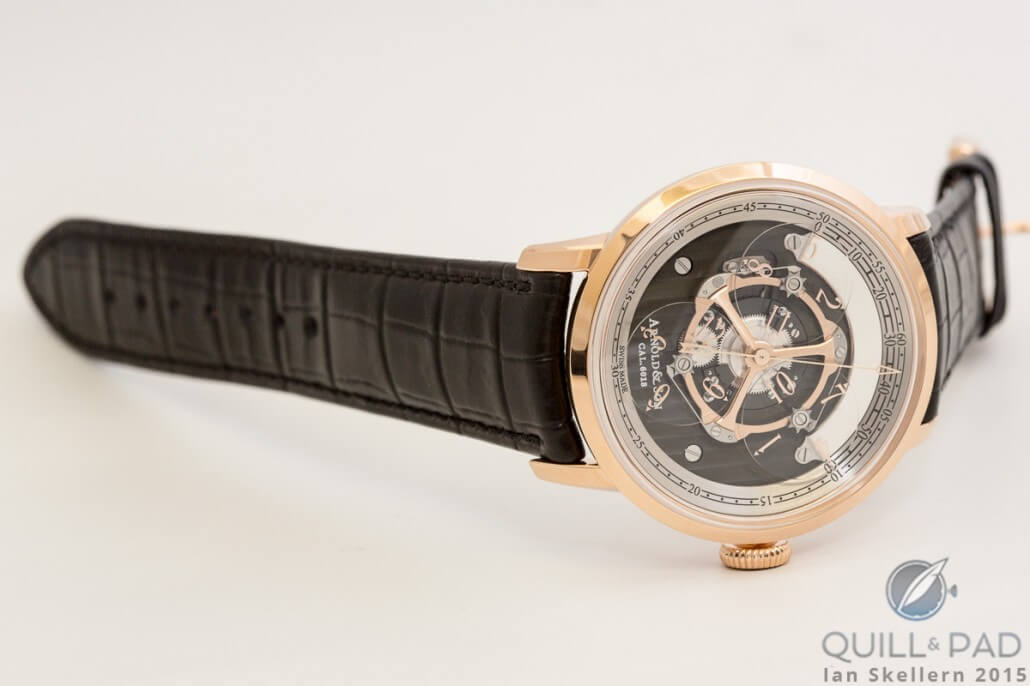
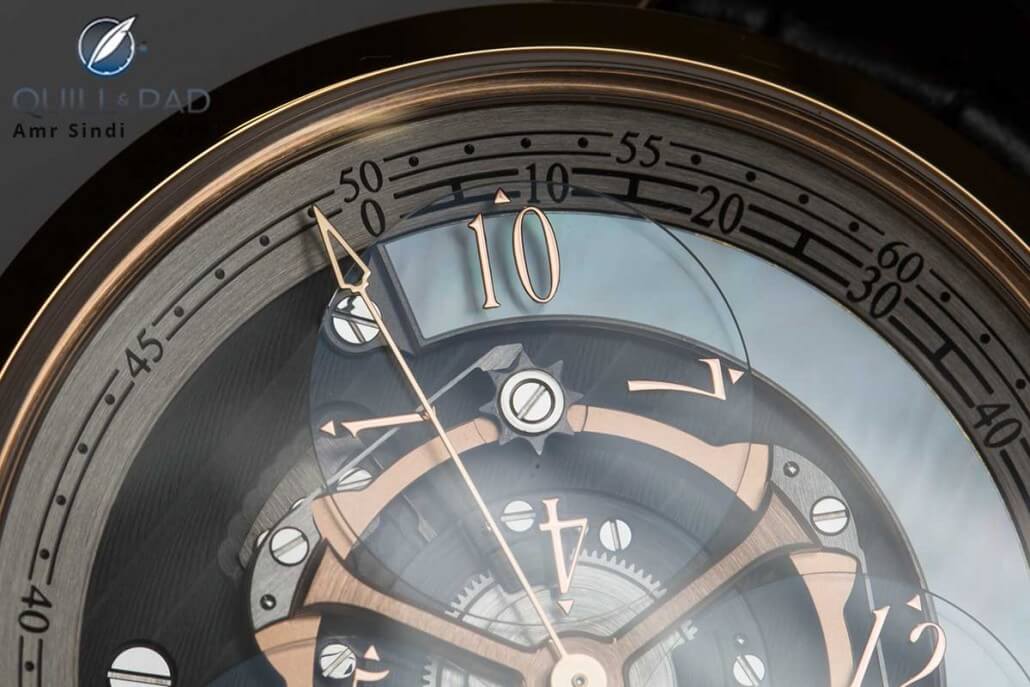
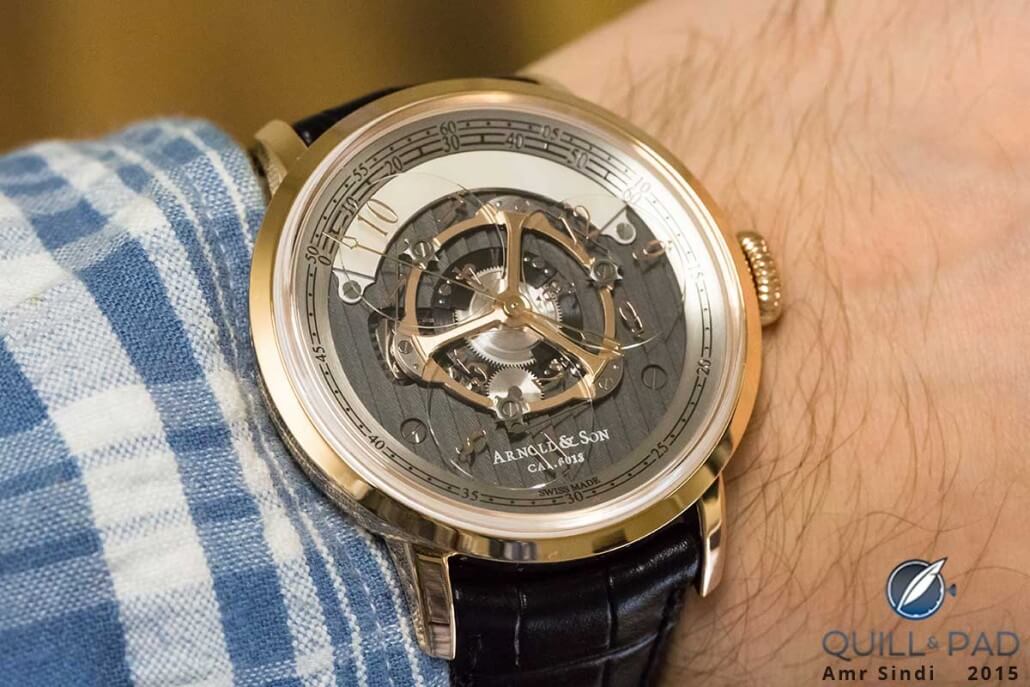
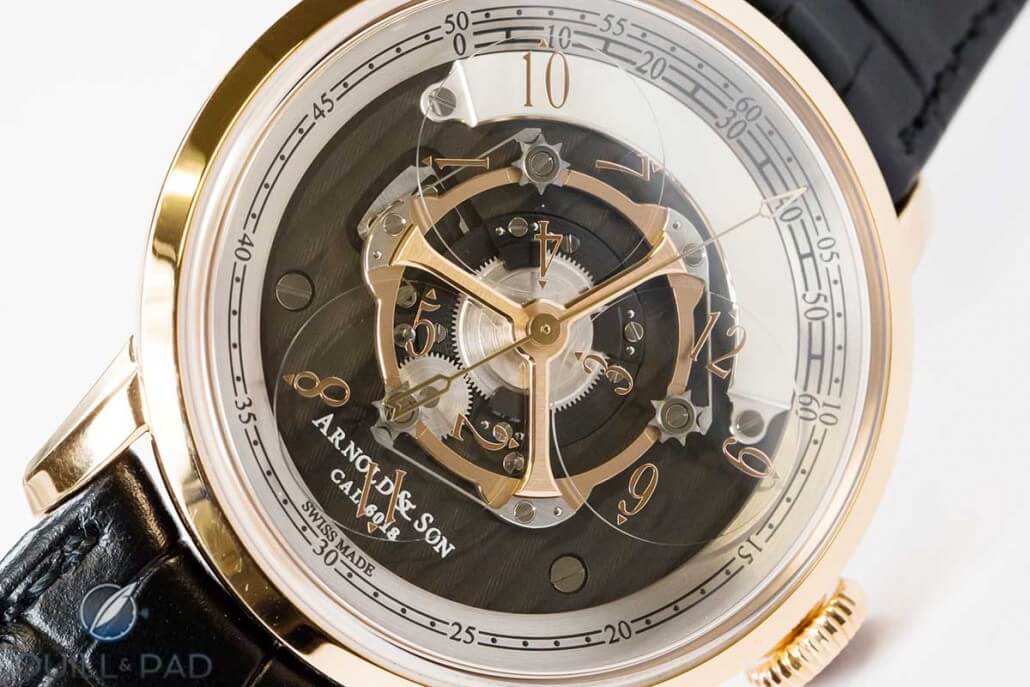
Leave a Reply
Want to join the discussion?Feel free to contribute!